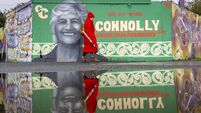If we’re not careful we’ll be back on the property hamster wheel
That bullish calculation of us needing well over half a million new homes was made by then Fianna Fáil housing minister Noel Ahern and it came at the beginning of 2007. It’s been a long seven years since then for all of us, not least our property market.
That minister is long gone, the political parties in power have changed and the majority of the builders have gone bust. We are in the midst of another property crisis — different but a crisis nonetheless. In May, over three years after they entered office, the Fine Gael/Labour government published a new strategy for a “renewed construction sector” called “Construction 2020”. Coupled with that were a number of other initiatives to try and help people to buy property, to keep people in their homes — whether rented or owned — or to accommodate those who have become newly homeless.

















